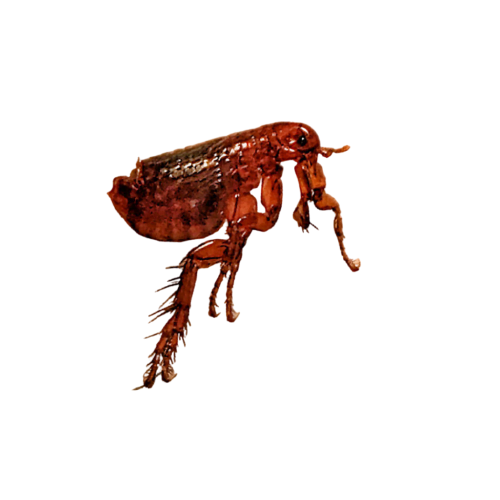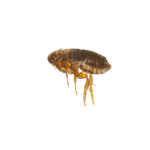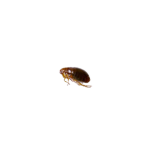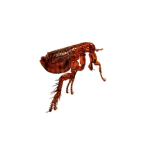
Unraveling the world of Fleas
Fleas are small insects that belong to the order Diptera, scientifically known as Siphonaptera. They are wingless creatures often found in the fur of cats, dogs, and rodents. Due to their attraction to humid and warm environments, they thrive in these areas. Fleas have the ability to pierce their hosts skin and feed on their blood. Being skilled jumpers, they can easily move to safer locations.
Depending on the species and environmental conditions, their lifespan varies from weeks to months. A female flea can lay up to 100 eggs, resulting in a rapid growth rate that makes them difficult to control. Measuring between 1.5 to 3.3 mm, fleas have flat bodies, enabling easy movement through their hosts. These parasites can cause severe allergic reactions and itching in both humans and animals and may even transmit diseases.

Life cycle of Fleas
The flea lifecycle consists of four stages: egg, larva, pupa, and adult. Eggs are laid on a host or in its environment, and from there, they develop into the larvae stage. Following the larval stage is pupation, which eventually leads to the emergence of the adult flea
Once the eggs hatch, the fleas enter the larval stage. Flea larvae lack eyes and legs and seek shelter in mammals. At this stage, they do not consume blood but instead feed on food particles from dead insects.
In the pupa stage, all flea organs are fully developed. When environmental conditions are favorable, they transition into the adult stage within a week.
After completing metamorphosis, adult fleas emerge from the pupa stage. At this point, they are ready to find a host and feed on blood.
Types of fleas

Cat fleas are one of the most common insect species, and they are commonly seen in cats. These species are capable of jumping great distances, which makes them difficult to eliminate. They are seen in a reddish brown color with flat bodies.
Cat flea
As the name suggests, these are found in the fur of dogs, but they can also be found in other animals. Compared to cat fleas, it is slightly larger and has a reddish-brown color.
Dog flea
These are mostly seen in rats, but they can also attack humans and transmit diseases. They have a dark brown to black color and prefer to live in rodent fur.
Oriental Rat fleaOvercoming flea infestation
Fleas, those tiny, blood-sucking pests, can be a real headache for both pets and humans alike. These pesky creatures not only cause discomfort to our furry friends but can also pose serious health risks to us.Flea infestations are not to be taken lightly, as they can spread diseases and lead to itching, skin irritation, and allergic reactions.Al Rasa pest control service in Dubai is here to address your flea problems effectively.Their team of experts is well-versed in understanding flea behavior and employing appropriate measures to eliminate it.By relying on their expertise, you can rest assured that the infestation will be handled thoroughly and with care.
Frequently Asked Questions
Fleas are primarily found on animals and in their fur, but they can also attack humans, causing bites that result in itching and leaving bumps on the body.
Some signs that your pet may have fleas include excessive scratching, irritated skin, and tiny black specks in their fur.
Yes, fleas can infest your home and lay eggs in carpets. If you have a flea infestation, it is essential to seek professional pest control assistance and consult a veterinarian to ensure your pets are free from diseases.
Although fleas prefer warm and humid habitats, they can survive in colder climates by seeking shelter in animals.
To prevent fleas, make sure to groom your pets regularly and consult a veterinarian to ensure the flea repellents you use are safe for them. Additionally, clean your living space regularly to minimize flea infestation risks.
Some interesting facts about Fleas
- Female fleas can lay up to 50 eggs per day, depending on their life cycle.
- Fleas can jump up to 150 times their body length.
- Fleas have existed for millions of years.
- There are about 2,500 species of fleas around the globe

Female fleas lay small, oval-shaped, white-colored eggs. It takes around two weeks for the eggs to hatch, depending on the temperature and environmental conditions. To lay eggs, female fleas require a blood meal.